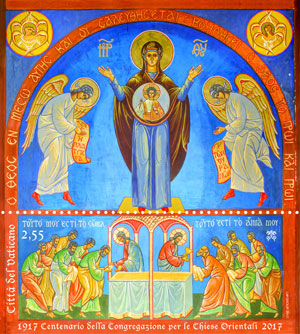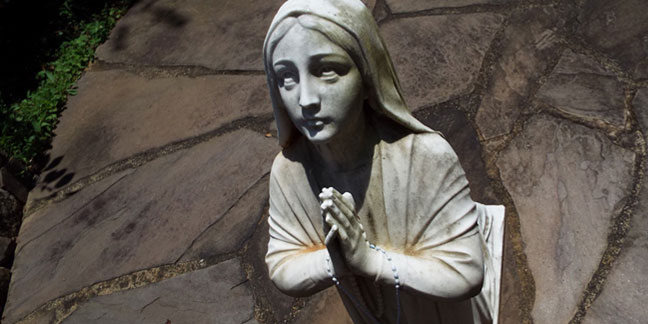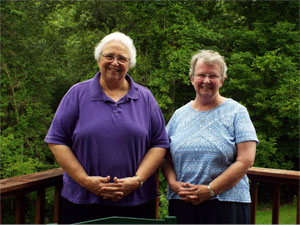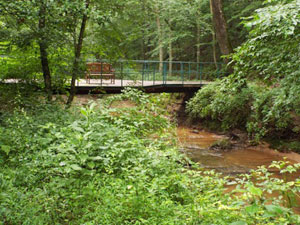 VATICAN CITY — The Vatican is celebrating the 100th anniversary of the establishment of the Congregation for Eastern Churches, an office that supports the Eastern Catholic churches and strives to ensure that the universal Catholic Church treasures its diversity, including in liturgy, spirituality and even canon law.
VATICAN CITY — The Vatican is celebrating the 100th anniversary of the establishment of the Congregation for Eastern Churches, an office that supports the Eastern Catholic churches and strives to ensure that the universal Catholic Church treasures its diversity, including in liturgy, spirituality and even canon law.
Coincidentally established five months before the Russian Revolution, the congregation continually has had to face the real persecution and threatened existence of some of the Eastern churches it was founded to fortify.
Until 1989-’90, many of the Byzantine Catholic churches – including, notably, the Ukrainian Catholic Church, the largest of all the Eastern churches – were either outlawed or severely repressed by the communist governments of Eastern Europe, said Archbishop Cyril Vasil, a member of the Slovak Catholic Church and secretary of the congregation.
No sooner had the Soviet bloc disintegrated and once-persecuted churches begun to flourish, then the first Gulf War broke out. And then there was the invasion of Iraq. And the turmoil of the Arab Spring across North Africa. Then the war in Syria. And Israeli-Palestinian tensions continue. The Chaldean, Syriac Catholic, Coptic Catholic, Melkite and Maronite churches have paid a high price.
“In all of this, the Eastern churches suffer the most because they find themselves crushed in the struggle between bigger powers, both local and global,” Archbishop Vasil said in mid-August. Even those conflicts that are not taking direct aim at Christians in the Middle East make life extremely difficult for them, and so many decide to seek a more peaceful life for themselves and their families outside the region.
One impact of the “exodus,” he said, is the greater globalization of the Catholic Church. While 100 years ago, when the Congregation for Eastern Churches was established, only a few Eastern churches had eparchies – dioceses – outside their traditional homelands, today they can be found in Australia, North and South America and scattered across Western Europe.
“In Sweden today, a third of the Christians are Chaldeans or Armenians,” he added. “In Belgium and Holland, where Catholicism has suffered a decline, communities are reborn with the arrival of new Christians, which is a reminder of the importance of immigrants bringing their faith with them.”
In countries like Italy, where thousands of Ukrainians and Romanians have come to work, they add ritual diversity to the expressions of Catholicism already found there, he said.
The growing movement of people around the globe means that part of the congregation’s job is to work with the Latin-rite bishops and dioceses, “sensitizing church public opinion” to the existence, heritage, needs and gifts of the Eastern Catholics moving into their communities, the archbishop said. Where an Eastern Catholic hierarchy has not been established, the local Latin-rite bishop has a responsibility “to accept, welcome and give respectful support to the Eastern Catholics” as their communities grow and become more stable.
The idea, Archbishop Vasil said, is to help the local Latin-rite bishop seriously ask himself, “How can I help them free themselves of me and get their own bishop?”
Although it has only 26 employees – counting the prefect, Cardinal Leonardo Sandri, and the receptionist – the Congregation for Eastern Churches works with 23 Eastern Catholic churches and communities, fulfilling the same tasks that for Latin-rite Catholics fall to the congregations for bishops, clergy, religious, divine worship and education.
The congregation’s approach in some areas is different than its Latin-rite counterparts because it follows the Eastern Catholic traditions and the Code of Canons of the Eastern Churches. For instance, some of the Eastern churches ordain married men to the priesthood.
But the congregation’s primary concern is the survival of the Eastern Catholic churches, which is an issue not only in places where Eastern Catholics are threatened with death or driven from their homelands by war.
Archbishop Vasil said others risk losing their Eastern Catholic identity through assimilation.
Some of the blame, at least before the Second Vatican Council, lies with the Vatican and the Latin-rite hierarchy and religious orders, who, for decades encouraged Eastern Catholics to be more like their Latin-rite brothers and sisters.
Vatican II urged a recovery of the Eastern Catholic traditions, liturgy and spirituality. But, especially for Eastern Catholics living far from their churches’ homelands, uprooting vestiges of the “Latinization” can prove difficult, Archbishop Vasil said.
Especially for Eastern Christians whose ancestors immigrated two or three or four generations ago, the archbishop said, maintaining their specific identity as Chaldean, Ruthenian or Syro-Malabar Catholics is a challenge.
“The greatest danger in the coming years is extinction,” Archbishop Vasil said. “We don’t know what history has in store for us, but we must make sure we have done everything possible to avoid this danger.”
— Cindy Wooden, Catholic News Service
 HAMPTONVILLE — The spiritual retreat known as Well of Mercy is difficult to find on a map even using the latest navigation app. Located on more than 100 rolling, green acres between Statesville and Winston-Salem, it is not advertised and its population is intentionally low at just 20 people.
HAMPTONVILLE — The spiritual retreat known as Well of Mercy is difficult to find on a map even using the latest navigation app. Located on more than 100 rolling, green acres between Statesville and Winston-Salem, it is not advertised and its population is intentionally low at just 20 people.
“Some guests have heard of Well of Mercy countless times and never paid much attention, but in their time of need, they find themselves coming here,” says its spiritual director, Peg Cartner.
Well of Mercy, founded in 1997 by Mercy Sister Brigid McCarthy and Mercy Sister Donna Vaillancourt, is a place for the brokenhearted and spiritually poor. These Sisters of Mercy have designed Well of Mercy as a sacred place dedicated to the individual and to silence – a place they felt called to establish after receiving numerous requests, particularly from women, looking for a peaceful location to pray and draw closer to God.
Sister Brigid explains, “Women today have anxiety from their families, their jobs, and are expected fill so many different roles. Well of Mercy is a place for women that need respite from the everyday goings-on of their lives. This is a safe place where she does not have to do anything. No expectations, no programs, no schedules. Our guests are able to experience individual spiritual peace and healing.”
Cartner notes, “This is not intended to be a group retreat center. No groups are allowed to rent this area. This is not some kind of conference center.”
The goal is for quiet to be preserved as much as possible. Each of the retreat’s four guest houses is intended for individual use. Visitors are encouraged to journey alone amid the safe environment and find their own spiritual path. There are hiking trails, a labyrinth, a chapel and a grotto to encourage prayer and self-reflection.


 Upon check-in, Cartner gives guests a map, some brochures, and a guideline paper on the importance of silence. At the bottom of the “Silence” brochure is Psalm 46:10: “Be still, and know that I am God.”
Upon check-in, Cartner gives guests a map, some brochures, and a guideline paper on the importance of silence. At the bottom of the “Silence” brochure is Psalm 46:10: “Be still, and know that I am God.”
Guests can even go a little further by making the retreat experience a silent journey, she adds. “They can wear a tag which reads ‘Please respect my silence.’ They can also sit at the ‘silent table’ during meals.”
“We want to support people for what they need in order to get them time with God and for tranquility and healing to occur,” Sister Brigid emphasizes. “We have healing spaces; there are 13 of them on the property. Some guests sit for hours in the same spot just reflecting, and that is OK.”
She adds, “My favorite spot is the bridge over the creek. It is a great place to sit. There are two benches opposite one another. We encourage people to say a prayer when the water is flowing down, casting out troubles in their own time of quiet. Emptying doubt, fear and regret spiritually. Then they should go to the other bench, where the water is flowing towards them. Here they should pray about what they would like to fill themselves with and receive it.”
Long-term guest and board member Michael Smiley says, “This place is a gift. Sister gives you exactly what you need when you need it.”
Indeed, all six employees are determined to nourish and protect guests at Well of Mercy. Says Cartner, “My job description is to do whatever it takes for people to feel nurtured and cared for.”
For more information about Well of Mercy or to make a reservation, call 704-539-5449 or go online to www.wellofmercy.org.
— Lisa Geraci, Correspondent

